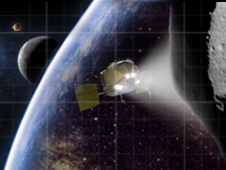Space shuttle's finale puts space industrial base at risk, says aerospace executive

NASA is winding down its three-decade-long space shuttle program, and is still mulling where to go next with human spaceflight. But if the time gap between the shuttle program and whatever replaces it is too long, we may lose some of our space travel industrial base, as well as the best and brightest in the industry.

That's the prognosis recently delivered by Jim Maser, president of Pratt & Whitney Rocketdyne, a unit of United Technologies Corporation. Underscoring the impact felt at his company alone, he said his company was already planning draconian cutbacks in human spaceflight division, as reported by Reuters:
"[Pratt & Whitney Rocketdyne] already had plans to close half its office and factory space over the next three years, and might have to lay off hundreds of employees unless NASA mapped out a shuttle successor plan within the next four to eight months. The United Technologies Corp unit also winnowed its list of suppliers from 600 to 200 over the past year, Maser told reporters, underscoring his commitment to cutting costs and making space systems more affordable."
Maser's company won't be the only casualty -- a lack of progress would put many second and third tier suppliers out of the market, as well as the knowledgeable and skilled workers needed to build vehicles for exploring space. "This is the first time since we've been a spacefaring nation that we're facing a real gap," Maser said. "We're out of time."
Maser also said that commercial spaceflight sales had not reached levels that could compensate for delays in the NASA human spaceflight program. However, there is quite a bit of activity in enabling space tourism in suborbital flights by carriers such as Virgin Galactic.
For its part, NASA says it is committed to human spaceflight that accomplishes a number of objectives, including servicing the International Space Station, exploring the moon and Mars, as well as flybys of asteroids. The agency released a framework document that outlines four priorities, including a space launch system, or heavy lift rocket; a multi-purpose crew vehicle; commercial crew and cargo services to low Earth orbit, including the International Space Station; and mission-focused technologies to support expanded exploration capabilities in the future."
This post was originally published on Smartplanet.com